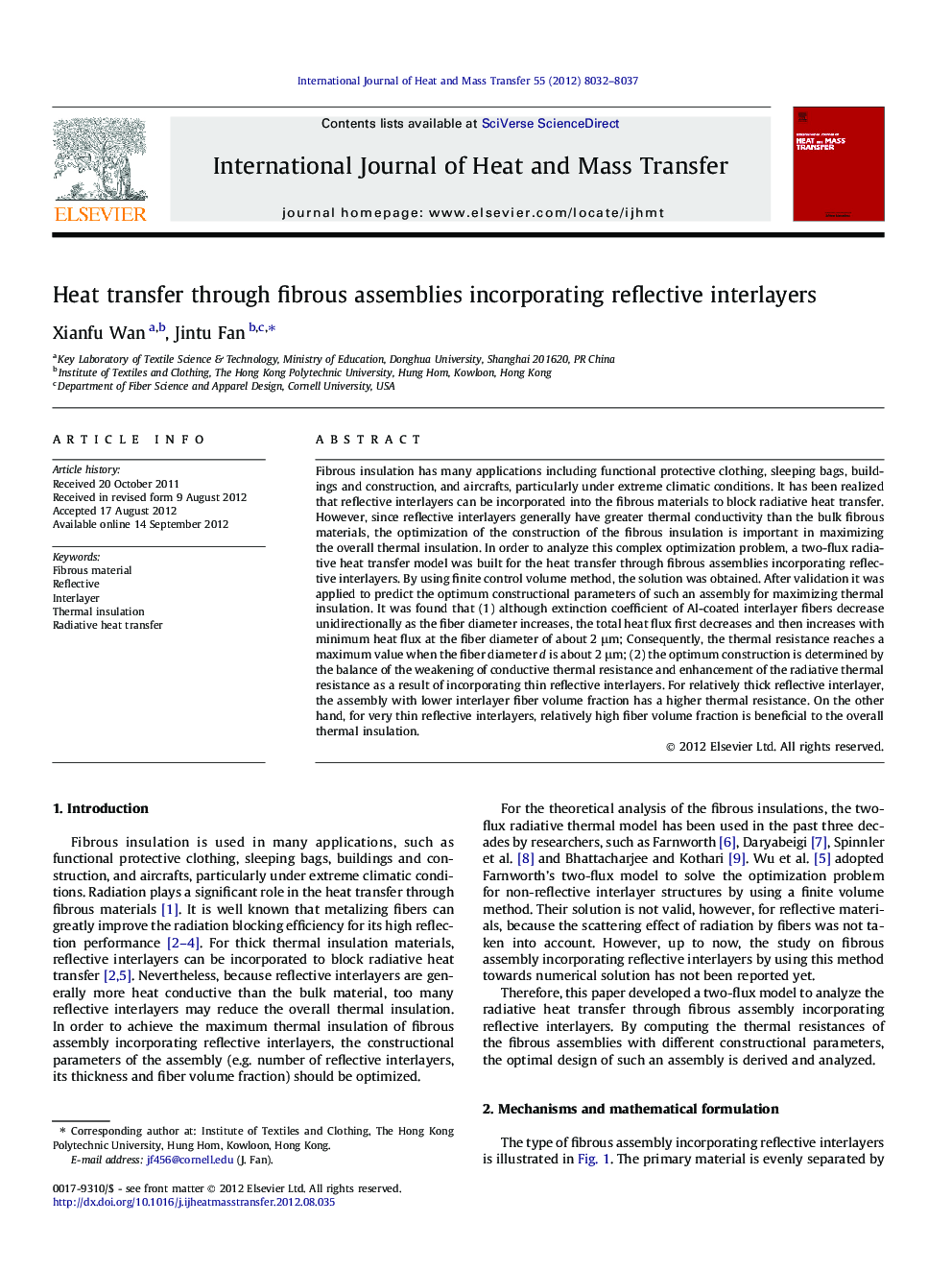| Article ID | Journal | Published Year | Pages | File Type |
|---|---|---|---|---|
| 7059670 | International Journal of Heat and Mass Transfer | 2012 | 6 Pages |
Abstract
Fibrous insulation has many applications including functional protective clothing, sleeping bags, buildings and construction, and aircrafts, particularly under extreme climatic conditions. It has been realized that reflective interlayers can be incorporated into the fibrous materials to block radiative heat transfer. However, since reflective interlayers generally have greater thermal conductivity than the bulk fibrous materials, the optimization of the construction of the fibrous insulation is important in maximizing the overall thermal insulation. In order to analyze this complex optimization problem, a two-flux radiative heat transfer model was built for the heat transfer through fibrous assemblies incorporating reflective interlayers. By using finite control volume method, the solution was obtained. After validation it was applied to predict the optimum constructional parameters of such an assembly for maximizing thermal insulation. It was found that (1) although extinction coefficient of Al-coated interlayer fibers decrease unidirectionally as the fiber diameter increases, the total heat flux first decreases and then increases with minimum heat flux at the fiber diameter of about 2 μm; Consequently, the thermal resistance reaches a maximum value when the fiber diameter d is about 2 μm; (2) the optimum construction is determined by the balance of the weakening of conductive thermal resistance and enhancement of the radiative thermal resistance as a result of incorporating thin reflective interlayers. For relatively thick reflective interlayer, the assembly with lower interlayer fiber volume fraction has a higher thermal resistance. On the other hand, for very thin reflective interlayers, relatively high fiber volume fraction is beneficial to the overall thermal insulation.
Related Topics
Physical Sciences and Engineering
Chemical Engineering
Fluid Flow and Transfer Processes
Authors
Xianfu Wan, Jintu Fan,
